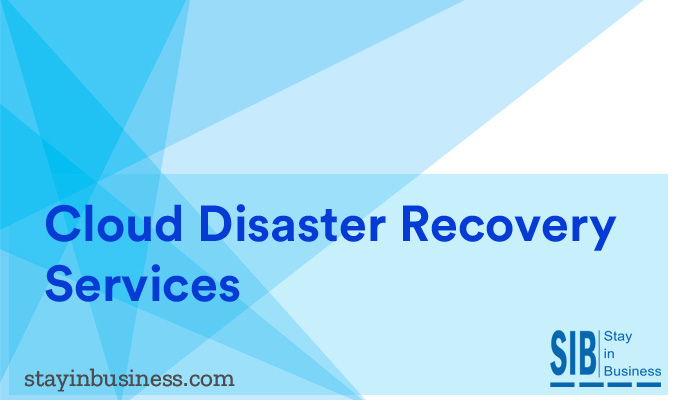
Compared to other forms of Disaster Recovery, Cloud Disaster Recovery Services is a relatively new concept. Cloud Disaster Recovery Services is cost effective and attractive to businesses because it is based only on the usage of the cloud for DR services. In other DR systems, the secondary apparatus lies idle most of the time and though necessary, businesses view them as a wasted resource. When the cloud is used, since the business does not need to invest in physical infrastructure, the need for additional space is also eliminated.
However, before a business rushes in to Cloud Disaster Recovery Services, it should analyze the entire scenario before taking a decision.Some aspects of the Cloud Disaster Recovery Services that have to be looked into as a part of due diligence on the part of the business is:
- How secure is the data transferred and stored in the cloud?
- How does the Cloud Disaster Recovery Services provider authenticate users?
- Is authentication by password only or do they provide a two stage authentication process?
- Is the Cloud Disaster Recovery Services provider in compliance with all regulatory requirements?
Since the cloud is accessed via the internet, bandwidth is of crucial importance. If the bandwidth is not sufficient, then the speed of data transfer will be slow, leading to loss of revenue as well as frustrated customers. Therefore the following factors must be taken into account before a decision is made:
- Does the business have sufficient bandwidth and network capacity to redirect all users to the site in the cloud?
- If restoration of data is planned from the cloud to on-site, how long will it take? Insufficient bandwidth may make the RTO very lengthy and not as planned.
Another important aspect of deciding on a Cloud Disaster Recovery Service provider is its reliability. The Service Provider should have the proven ability to handle your customers while a disaster is in progress. At this crucial moment if the Service Provider does not perform as promised, it will entail significant loss of revenue and goodwill.
There is no single blue print for Cloud Disaster Recovery Services. Each business will have its own needs and the DR plan will be specific to its business priorities. To draw up a cloud based DR plan, a business should first determine its core applications, data and other services. Once these core areas are identified, the next step is to determine the acceptable downtime before there will be a significant business impact. Insignificant and irrelevant data and applications should be relegated to the background. Based on these data, the RTO and RPO numbers can be determined. When the DR plan is focussed only on critical aspects of the business, it can be tested more easily to check that it meets defined objectives. A focussed DR plan will also lower costs.
Some of the advantages of using Cloud Disaster Recovery Services are:
- The Disaster Recovery (DR) process is relatively simple. It requires no application modification. It does not need any extra hardware on-site. This ensures seamless implementation of the DR plan.
- The switch over process is fast and permits resumption of normal business operations in the shortest possible time.
- The Disaster Recovery (DR) plan can be easily tested to ensure it works as planned.
- A good Cloud Disaster Recovery service provider will provide good support services during a disaster.
- It is a cost effective DR solution.
Though Cloud Disaster Recovery Services is in a nascent stage, it has already found favour with many businesses due to effective costs, seamless operation and scalability to suit the businesses needs.
[/read]
Disasters
[carousel id=’1780′ items=’4′ items_desktop=’3′ margin_right=’5′ navigation=’false’] [item img_link=”https://www.stayinbusiness.com/wp-content/uploads/2016/02/Chemical-Spills-Discharges.jpg” href=”https://www.stayinbusiness.com/resource/disaster-recovery/chemical-spills-and-discharges/”][item img_link=”https://www.stayinbusiness.com/wp-content/uploads/2016/02/Riots-Public-Disturbances.jpg” href=”https://www.stayinbusiness.com/resource/disaster-recovery/riots-and-public-disturbances/”][item img_link=”https://www.stayinbusiness.com/wp-content/uploads/2016/02/Terrorism.jpg” href=”https://www.stayinbusiness.com/resource/disaster-recovery/terrorism/”] [item img_link=”https://www.stayinbusiness.com/wp-content/uploads/2016/02/worst-product-recall.jpg” href=”https://www.stayinbusiness.com/resource/disaster-recovery/product-recall/”] [/carousel]

